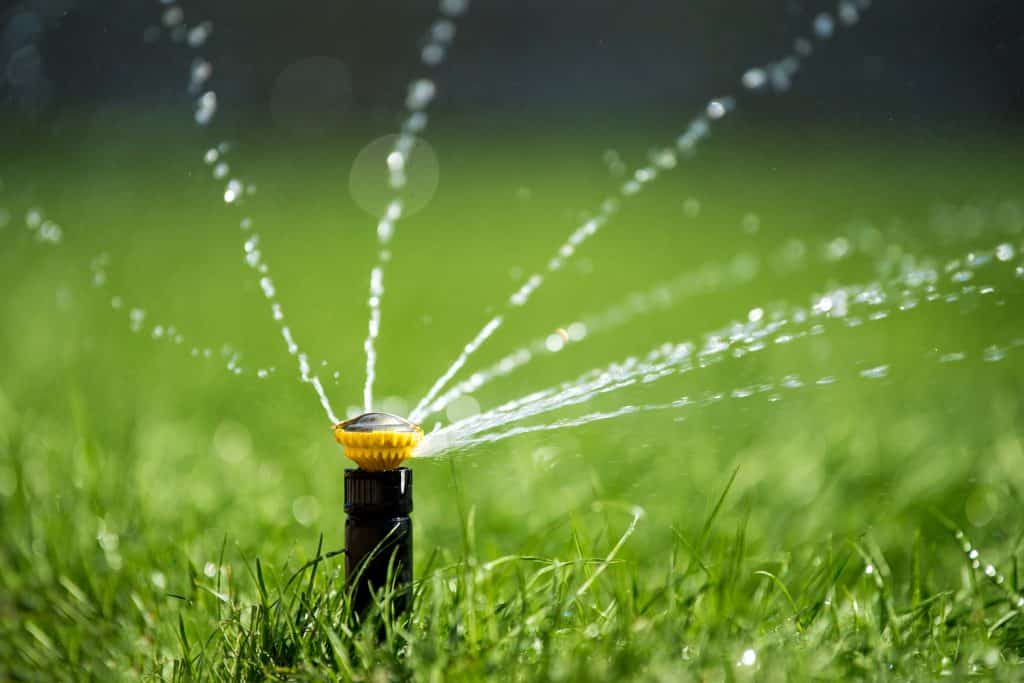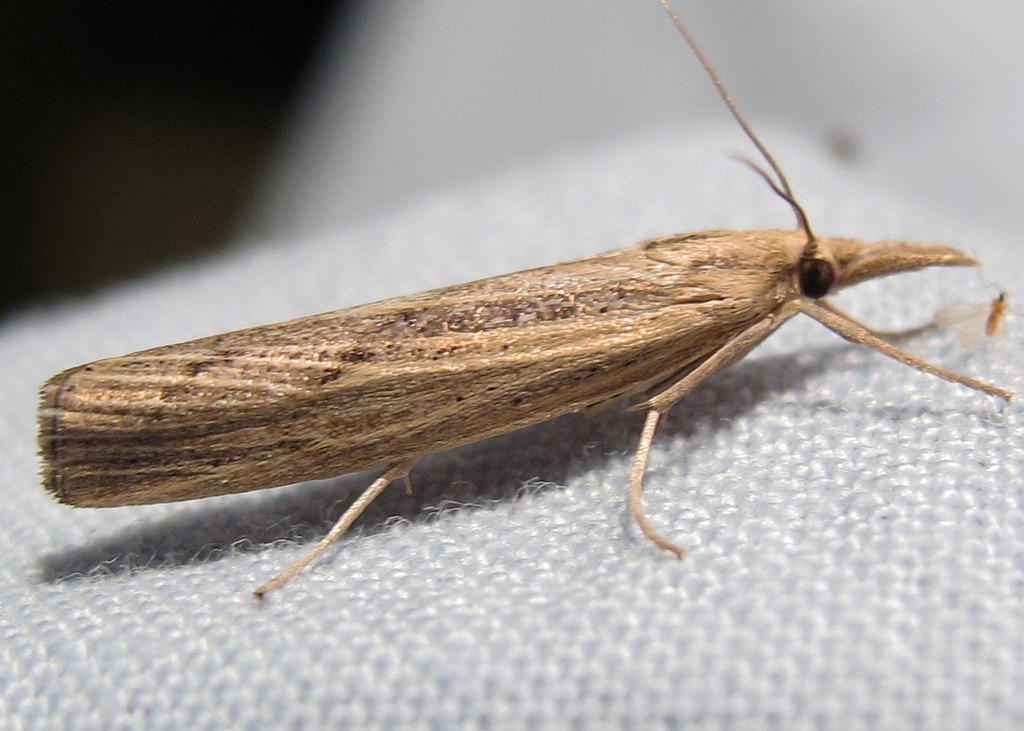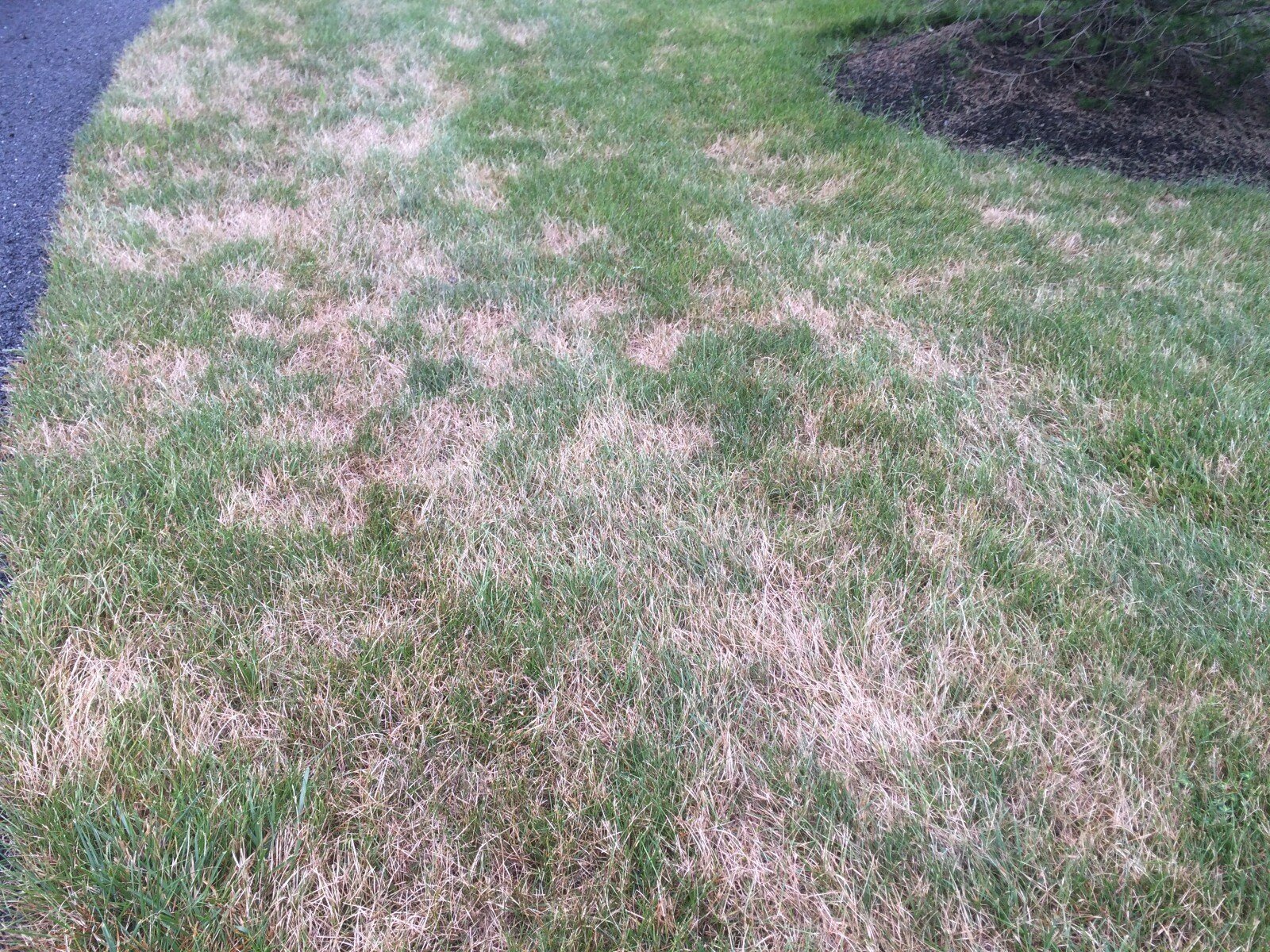Nobody brags about their beautiful yellow or brown lawn. Cars don’t slow down to admire yellow grass.
Still, it happens to the best of us.
So, your grass is turning yellow. Or your grass is turning brown.
Whyyyyyyyyy???!!!
Don’t panic. Here’s what might be happening out there, and what you — or your lawn care company — should do about it.
1. Your Grass is Turning Yellow? Are You Overwatering?
This is a big one. Yes, grass needs plenty of water. But not too much. Overwatering is actually worse than underwatering.
Overwatering the lawn drowns the grass and you’ll notice your grass is turning yellow. 
Some homeowners notice yellow spots, panic, and water more, assuming their lawn is too dry.
You can see the problem. Suddenly, you have root rot, and your lawn may not be able to recover.
What to do: keep track of how much water your lawn is getting.
Here at Ground Source, we recommend 3/4 inch of water per zone.
How long does it take to deliver 3/4 inch of water? It depends on the type of irrigation head. You could stand out in the middle of your yard with a cup and a ruler. Better yet, follow our rule of thumb:
- Spray heads: 30 minutes
- Rotors: 50-60 minutes
- MP rotors: 1-2 hours
2. Or Are You Underwatering?
Your grass is turning brown? It might be really thirsty.
What to do: Make sure water reaches every area of your lawn. Sprinklers sometimes miss edges and corners, making these spots dry out faster than the center of the lawn.
Keep in mind that areas of lawn near buildings, concrete, and asphalt will typically dry out faster due to reflected heat and may need additional water.
3. Winter Dormancy (Shhhh: It’s Sleeping)
Here in central Florida, grass becomes dormant and turns brown in the winter. Growth naturally slows down, and it becomes less green.
Worried it might be dead? Give it a tug. If the plants pull out from the ground easily, they're probably dead. If the roots hold fast when pulled, the plants are dormant.
What to do: Don’t worry. If your grass is dormant, it will naturally green up again in the spring.
4. Your Grass is Turning Brown? It Might Be Bugs
Your lawn is a big buffet for bugs. Chinch bugs live on blades of grass and suck the juices. Sod webworms eat the leaves. Grubs and billbugs live in the soil and damage grass roots.
It all adds up to brown spots of dead and dying grass.
What to do: Lawn care experts can help you identify what bug or bugs are damaging your lawn, and will likely suggest an insecticide or other treatment to get rid of them.
But remember, insects aren’t the only cause of grass turning brown, so make sure you correctly identify the problem before applying any pesticide treatments.
5. Disease Damage
Extra moisture can make your lawn susceptible to fungus.
How do you know if fungus has set in? As with many lawn care problems, it’s tricky to tell.
You might see brown spots, assume your new sod needs more water, and end up making the problem worse.
Take a really close look. Lawn damaged by fungus will often have a brown dead spot where the grass has died, but a lighter yellow-ish-brown ring around that where the fungus is spreading.
What to do: Apply a systemic and curative fungicide.
6. Are You Feeding the Poor Thing Enough?
If your grass is turning brown, it might be hungry. When it doesn’t get all the nutrients it needs, it can’t exactly head to the fridge at midnight for a snack. It depends on you to feed it enough.
What to do; Make sure it’s getting all the nutrients it needs by fertilizing regularly, in spring, summer, and fall.
Also, get your soul pH tested. Important nutrients for grass are available in soil when the pH is balanced. If your pH is off, your grass won’t get the nutrients it needs, no matter how much you fertilize.
The right pH unlocks your lawn’s ability to take in nutrients and thrive.
7. Grass is Turning Yellow? You Might Be Overfertilizing
Just like you shouldn’t eat three pizzas, your grass shouldn’t get too much food, either.
When you overfertilize, salts build up in the soil and cause a drying effect, which can result in fertilizer burn — the grass turning yellow or brown.
What to do: Don’t assume more fertilizer is better. Read and follow the instructions on your fertilizer.
Need Healthy New Grass? Trust Ground Source
Sometimes, despite your best efforts, your yellow or brown grass just won’t get green again.
It might be time to start over with a healthy, green, new sod lawn.
We’re sod experts, but our skills don’t stop there. We’re with you every step of the way as you plan your perfect outdoor space.
Sod, irrigation, landscape design: Let us transform your yard from an embarrassing eyesore to a place you spend every spare minute.
Are you ready to enjoy the vibrant, impressive yard you've always wanted? Request a quote today! We’ll help you review your options and then transform your property.
Image Source: Sod Webworm Adult



